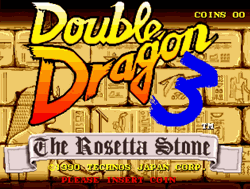 It is important to remember that sometimes the bad guys do lose.
It is important to remember that sometimes the bad guys do lose.
Today we are looking at Double Dragon 3. Appropriate to the title of the franchise, Double Dragon 3 has two generally distinct versions: Double Dragon 3: The Rosetta Stone, which was the arcade version that was ported to a couple of different systems (like Gameboy and Sega Genesis), and Double Dragon III: The Sacred Stones, the Nintendo Entertainment System title that had the same overall concept, but significantly different gameplay. What was the difference in gameplay? Well, the NES version wasn’t constantly trying to fleece the player.
Double Dragon 3: The Rosetta Stone is, superficially, the same beat ‘em up experience that the franchise had always delivered. Yes, we now have a situation wherein the Lee Brothers (now with a third bro! Because someone welded a third controller to the cabinet!) are going to go on a world tour to collect rocks with the eventual goal of being the best rockers on the planet or something, but the general minute-to-minute is unchanged. You have a collection of random mooks per stage that you are required to punch into submission, then the big boss shows up, you punch him (inevitably him) but good, and move on to the next stage. It doesn’t matter if you are in a generically grimy city or tumbling through a coliseum in Rome, this is the Double Dragon we all know and generally tolerate.
But there is one significant change in Double Dragon 3: The Rosetta Stones, and it’s right there on the first screen of the first level…

Technically this is the shop from the finale, but whatever, okay?
Ladies and gentlemen, welcome to the shop. A shop just like this one appears in 80% of the levels of DD3:TRS, and usually at the start (the only exception is the final level, where it is the start of a boss gauntlet). Like in many games of the era, you can purchase a number of helpful items at said shop. You can top off your health points! Buy weapons for dealing additional damage! Or maximize your fists’ power to just do extra damage without the need of a sword! Or purchase “secret techniques” so you can perform flying kicks and throws! And the extra special cherry on top: buying extra “lives” not only means you purchase additional life bars for your protagonists, it also allows you to play as entirely different characters with marginally different offensive styles (or at least different hitboxes). Basically, if you want a new Double Dragon experience, it is all tied to the shop. This is the biggest difference between Double Dragon 3 and its predecessors (well, other than that direction-attack button thing from Double Dragon 2 being dropped), and it is all available for a few credits in the shop.
Oh, and I do mean credits, as Double Dragon 3: The Rosetta Stones’ shops are all fueled by real, American quarters.
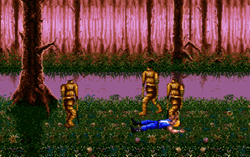 Let us look at that shop’s inventory from a different perspective. Powering up your fighter? Well, that is going to save you quarters, as a dead enemy takes off a lot less health. Weapons? Also going to save your life, because it means you do not have to get any closer to hazardous fists. Speaking of life, having more lives is obviously going to put you further from having to insert another credit. And even the special moves are all jump based and obviously modeled after the most effective ways to survive in previous Double Dragon titles. In short, if you have any familiarity with Double Dragon (and, at this point in the existence of arcades, why wouldn’t you?), you are going to make a beeline for those items. Sure, it all costs real money, but those same quarters would be required to recover anyway. You’re practically saving money!
Let us look at that shop’s inventory from a different perspective. Powering up your fighter? Well, that is going to save you quarters, as a dead enemy takes off a lot less health. Weapons? Also going to save your life, because it means you do not have to get any closer to hazardous fists. Speaking of life, having more lives is obviously going to put you further from having to insert another credit. And even the special moves are all jump based and obviously modeled after the most effective ways to survive in previous Double Dragon titles. In short, if you have any familiarity with Double Dragon (and, at this point in the existence of arcades, why wouldn’t you?), you are going to make a beeline for those items. Sure, it all costs real money, but those same quarters would be required to recover anyway. You’re practically saving money!
Or you would be, if Double Dragon 3: The Rosetta Stones was a remotely fair game.
As an officially licensed beat ‘em upologist, I can say with some authority that the first two levels of DD3:TRS are about what you should expect from a beat ‘em up as far as challenges go. There is an unstoppable army of dudes, but you will defeat them, because they have basic patterns, and local traps and tricks can be utilized to blaze a trail straight through to China. But once you hit approximately level 3, the bullshit comes fast and furious. It is hard to say if it is deliberate or just poor programming, but any given fighter on your side has some significant lag after being stunned, so being essentially “stun locked” while battling a boss becomes the standard for many fights. Regular enemies gain some moves with absurd range so you can’t so much as jumpkick a tree without an across-the-screen interruption. And the final boss? By Anubis, she has the ability to toss your Bimmy across the screen from across the screen. She can just spam the same “death move” over and over again, and your only recourse is hoping the A.I. shows some modicum of mercy so you can maybe land a punch. The point here? You need those powerups to survive, so even if you “buy your levels” to maximum right from the get-go, you are still going to be down a few more dollars by the end of the adventure. Double Dragon 3: The Rosetta Stones is unapologetically balanced to bleed your wallet dry.
And nobody liked that.
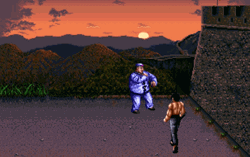 Records of top grossing arcade machines from 1990 are difficult to find, but we can see the legacy of Double Dragon 3: The Rosetta Stone in its own descendants. This arcade title premiered in America, but, by the time it migrated over to Japan six months later, its whole shop system had been hastily excised. Any and all shops in the game are now boarded up and inaccessible, and the first level that seemed to be designed around emphasizing the opening shop was “scrolled forward” permanently so you would never know there was such an embarrassment lurking around the corner. And, without the shops, weapons are now free and lying around, “secret techniques” are accessible at all times, and a player can spontaneously select any of the characters right from credit one. And, while you cannot spend a quarter to power up your punches, all of your opponents mysteriously do about a third less damage on their hits. Gosh! Put it all together, and it sure seems like the original version was balanced entirely around a player that spent about two dollars on bits and baubles! And that was dropped from the next version because nobody actually did that.
Records of top grossing arcade machines from 1990 are difficult to find, but we can see the legacy of Double Dragon 3: The Rosetta Stone in its own descendants. This arcade title premiered in America, but, by the time it migrated over to Japan six months later, its whole shop system had been hastily excised. Any and all shops in the game are now boarded up and inaccessible, and the first level that seemed to be designed around emphasizing the opening shop was “scrolled forward” permanently so you would never know there was such an embarrassment lurking around the corner. And, without the shops, weapons are now free and lying around, “secret techniques” are accessible at all times, and a player can spontaneously select any of the characters right from credit one. And, while you cannot spend a quarter to power up your punches, all of your opponents mysteriously do about a third less damage on their hits. Gosh! Put it all together, and it sure seems like the original version was balanced entirely around a player that spent about two dollars on bits and baubles! And that was dropped from the next version because nobody actually did that.
And then we finally get to the NES version. Double Dragon III: The Sacred Stones was reportedly developed in parallel to the arcade version, but it was also released a year later, so it clearly had some foreknowledge of how things went in the arcade. In this case, some of the fun aspects of Double Dragon 2 that had been dropped for Double Dragon 3: The Rosetta Stone returned in the NES version (you can always enjoy a hair grab). Additionally, the concept of multiple playable characters was adopted from the arcade, but now you do the more traditional NES thing of beating bosses who eventually join your team (Mega Dragon 3). And, like the Japanese arcade version, the shops are completely gone, and there is not so much as a points system to simulate the “joy” of purchasing weapons. Actually, you do get “limited ammo” weapons naturally with each of the selectable characters, but, with no way to refill your reserves, they are extremely situational.
Oh, and it is probably worth nothing that this version of Double Dragon 3 bombed, too. Like, Water World for Virtual Boy bombed…
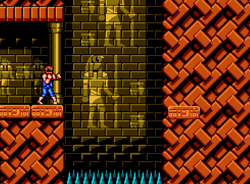 Why? Well, NES DD3 has its own share of problems. For one thing, in one player mode, you only have one “life” for like half the game, and the concept of continuing is not introduced until Level 4. For another thing, while this whole experience feels a lot less janky than its predatory arcade counterpart, it is still pretty dang cumbersome for a 1991 NES title that should really know better. This was released the same year as Teenage Mutant Ninja Turtles 3: The Manhattan Project! A beat ‘em up that is fun from start to finish! DD3 doesn’t even have the good sense to include a pig with a mace strapped to his head! Oh, and the translation/story is nearly incomprehensible, with a hatchet job of a “let’s include the girlfriend again” plot that somehow transforms Marion into an Egyptian death goddess. Granted, that may not make a huge impact on how a beat ‘em up is received, but the narrative was so unintelligible that not even glowing Nintendo Power coverage could polish this turd. And they successfully made Final Fantasy Legends seem sane! Between that and likely seeing a game over without exiting the first screen, it is easy to see how this beat ‘em up sequel did not leave a good impression.
Why? Well, NES DD3 has its own share of problems. For one thing, in one player mode, you only have one “life” for like half the game, and the concept of continuing is not introduced until Level 4. For another thing, while this whole experience feels a lot less janky than its predatory arcade counterpart, it is still pretty dang cumbersome for a 1991 NES title that should really know better. This was released the same year as Teenage Mutant Ninja Turtles 3: The Manhattan Project! A beat ‘em up that is fun from start to finish! DD3 doesn’t even have the good sense to include a pig with a mace strapped to his head! Oh, and the translation/story is nearly incomprehensible, with a hatchet job of a “let’s include the girlfriend again” plot that somehow transforms Marion into an Egyptian death goddess. Granted, that may not make a huge impact on how a beat ‘em up is received, but the narrative was so unintelligible that not even glowing Nintendo Power coverage could polish this turd. And they successfully made Final Fantasy Legends seem sane! Between that and likely seeing a game over without exiting the first screen, it is easy to see how this beat ‘em up sequel did not leave a good impression.
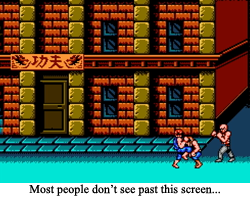 And despite the fact that Double Dragon then went on to headline the second videogame movie ever made (!), this is the game that killed the franchise. A “real” Double Dragon 4 would not be seen for decades, and the best the Lee Brothers could hope for for beat ‘em up action in the meanwhile was starring opposite some amphibians (and not even the popular amphibians!). It sure looks like, whether through apathy or dedicated protest, the public did not appreciate the rapacious Double Dragon 3: The Rosetta Stones, and it poisoned the franchise for years. And, given we never saw such predatory models in Double Dragon or another beat ‘em up ever again, it seems like even the videogame companies learned to avoid these terrible microtransactions.
And despite the fact that Double Dragon then went on to headline the second videogame movie ever made (!), this is the game that killed the franchise. A “real” Double Dragon 4 would not be seen for decades, and the best the Lee Brothers could hope for for beat ‘em up action in the meanwhile was starring opposite some amphibians (and not even the popular amphibians!). It sure looks like, whether through apathy or dedicated protest, the public did not appreciate the rapacious Double Dragon 3: The Rosetta Stones, and it poisoned the franchise for years. And, given we never saw such predatory models in Double Dragon or another beat ‘em up ever again, it seems like even the videogame companies learned to avoid these terrible microtransactions.
So the bad guys trying to squeeze extra money out of their audience well and truly lost. We now live in a glorious future where…
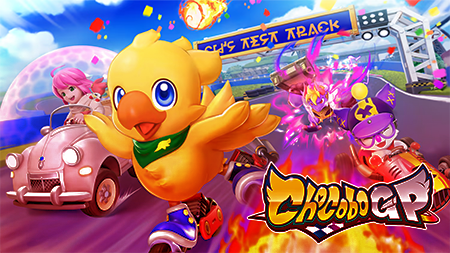
Oh dammit.
FGC #625 Double Dragon 3: The Rosetta Stone
- System: Let’s claim that today’s article is based on the arcade version exclusively, and the NES version is a weird footnote. The arcade version was distinctly ported to a number of systems, like Gameboy and Sega Genesis, but each of those had to include odd concessions to account for credits system. You mostly got virtual coins for “whatever”, so the shops still kinda worked without demanding you install a quarter slot on your Amiga. Also: not at all worth playing.
- Number of players: Three in the arcade, two at home. Note that there is a special move you can only use when you have two players available, so that is yet another way this damned thing bleeds cash out of its players.
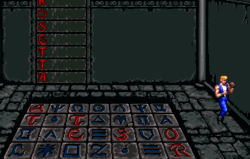 Favorite Fighter: It is abundantly clear that the arcade characters are not balanced as well as the Lee Brothers, and any given giant playable character is all vulnerable hit box and no reciprocal power. And Chin… man, we’re not talking about Chin. So I guess the default Lees win by default. Hooray for normalcy.
Favorite Fighter: It is abundantly clear that the arcade characters are not balanced as well as the Lee Brothers, and any given giant playable character is all vulnerable hit box and no reciprocal power. And Chin… man, we’re not talking about Chin. So I guess the default Lees win by default. Hooray for normalcy.- Favorite What The Hell is Happening: There is exactly one puzzle in the arcade version, and it is a “challenge” to walk across the right floor tiles to spell out “Rosetta”. You are also being chased by a gigantic alien monster the entire time. This creature is then never seen or referenced again. I… feel like this should be acknowledged.
- An end: The NES version offers a customized epilogue for each of the characters, but the Famicom port only provides an ending for characters that are still alive. I guess this implies any of your defeated fighters are actually dead-dead, and Billy might be an only child if no one ever hits start on a second controller. Meanwhile, the ending for the arcade version is simply Billy rolling around in a pile of plundered gold. Thank you, Karnov.
- Did you know? The NES version is the source of the infamous “Bimmy” mistranslation that misnames Jimmy to a name closer to his brother’s. However, like the arcade version, the American version came first here, and it is likely this is less a translation error as a programming error that only appears when the opening crawl has to name both players (it is completely absent in one player mode). So blame the computer nerds, not the language nerds.
- Would I play again: Never. Other Double Dragon games are better than this. Yes, even that Double Dragon game. It’s better. You know it.
What’s next? Random ROB has chosen… Kirby and the Forgotten Land! Here is where I use the prerequisite “it’s going to suck” joke! Please look forward to it!
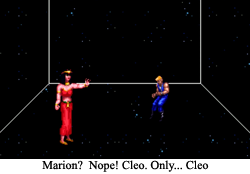
Big ol’ prototype for the microtransaction-driven hellscape that is mobile gaming right there with US Double D-3.
Turns out all they really had to do to make money with this obvious scam was make the game “free” and put it on a thing people would have with them all the time with regular updates. Not that it was an option back then.